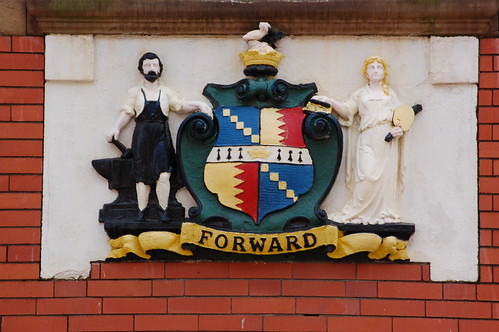My new book on Pink Floyd is given as a reference in an article on Pink Floyd’s film, The Wall, on Wikipedia.
The reference is entered using Wikipedia’s {{Cite book}} template, which in turn emits the requisite HTML mark-up, including COinS metadata:
<span class="citation book">Mabbett, Andy (2010). <i>Pink Floyd - The Music and the Mystery</i>. London: Omnibus,. ISBN <a href="...">9781849383707</a>.</span>
<span class="Z3988" title="ctx_ver=Z39.88-2004&rft_val_fmt=info%3Aofi%2Ffmt%3Akev%3Amtx%3Abook&rft.genre=book&rft.btitle=Pink+Floyd+-+The+Music+and+the+Mystery&rft.aulast=Mabbett&rft.aufirst=%26%2332%3B%26%2332%3BAndy&rft.au
=Mabbett%2C%26%2332%3B%26%2332%3B%26%2332%3BAndy&rft.date=2010&rft.place=London&rft.pub=
Omnibus%2C&rft.isbn=9781849383707&rfr_id=info:sid/en.wikipedia.org:Pink_Floyd_The_
Wall_(film)"><span style="display: none;"> </span></span>
And here it is again, with line breaks inserted for clarity:
<span class="citation book">Mabbett, Andy (2010). <i>Pink Floyd - The Music and the Mystery</i>. London: Omnibus,. ISBN <a href="...">9781849383707</a>.</span>
<span class="Z3988" title="ctx_ver=Z39.88-2004
&rft_val_fmt=info%3Aofi%2Ffmt%3Akev%3Amtx%3Abook
&rft.genre=book
&rft.btitle=Pink+Floyd+-+The+Music+and+the+Mystery
&rft.aulast=Mabbett
&rft.aufirst=%26%2332%3B%26%2332%3BAndy
&rft.au=Mabbett%2C%26%2332%3B%26%2332%3B%26%2332%3BAndy
&rft.date=2010
&rft.place=London
&rft.pub=Omnibus%2C
&rft.isbn=9781849383707
&rfr_id=info:sid/en.wikipedia.org:Pink_Floyd_The_Wall_(film)">
<span style="display: none;"> </span>
</span>
Some people complain that the presence of COinS bloats pages which have many references: for instance, note that my name, the publisher (“Omnibus“), publishers’ location (“London“), ISBN etc., plus the article’s URL, are repeated in the title attribute of the span which has class=”Z3988″, used to denoted COinS metadata.
If we were to mark that up with the proposed citation microformat, hCite, it might look like this:
<span class="citation book hCite"><span class="author vcard"><span class="fn">Mabbett, Andy</span></span> (<span class="dtstart">2010</span>). <i class="work">Pink Floyd - The Music and the Mystery</i>. <span class="publisher vcard"><span class="label">London</span>: <span class="fn org">Omnibus</span>,. ISBN <a href="..." class="isbn">9781849383707</a>.</span>
Despite adding semantic class names (hcite, author, vcard, fn, dtstart, work, publisher, label, org, isbn), and span elements on which to hang some of them, this is markedly more compact (down from 614 to 363 characters, excluding the redacted URL), easier for humans to read, doesn’t require lots of escaped characters and doesn’t repeat any of the data. The processing burden on Wikipedia’s servers would also be lower.
The primary tool used for accessing COinS metadata is Zotero; whose authors have already indicated to me (in conversation) an interest in parsing such a microformat.
Discussions of what to include in the proposed citation microformat on the microformats mailing list stalled sometime ago, but that doesn’t stop an organisation like Wikipedia from developing a draft, implementing it, and presenting it to the wider web community for discussion, improvement and ratification. The draft could have 1–1 mapping with the properties in COinS, to facilitate ease of conversion by parsing tools.
Like this:
Like Loading...


